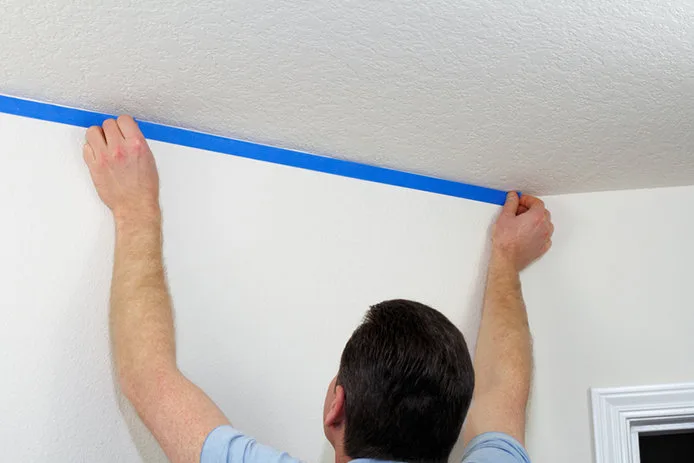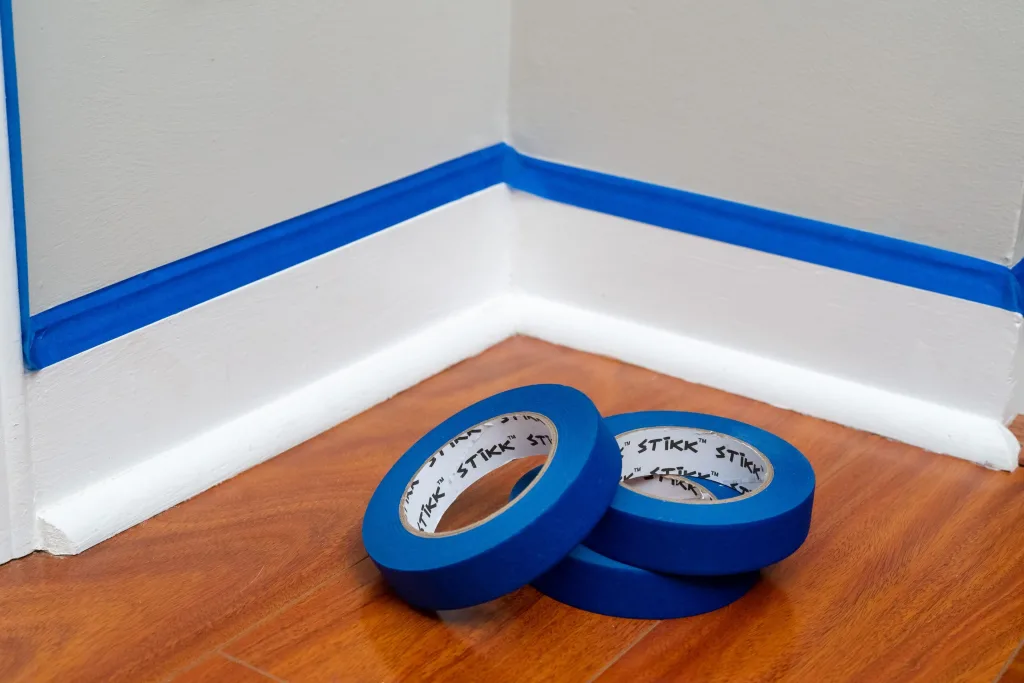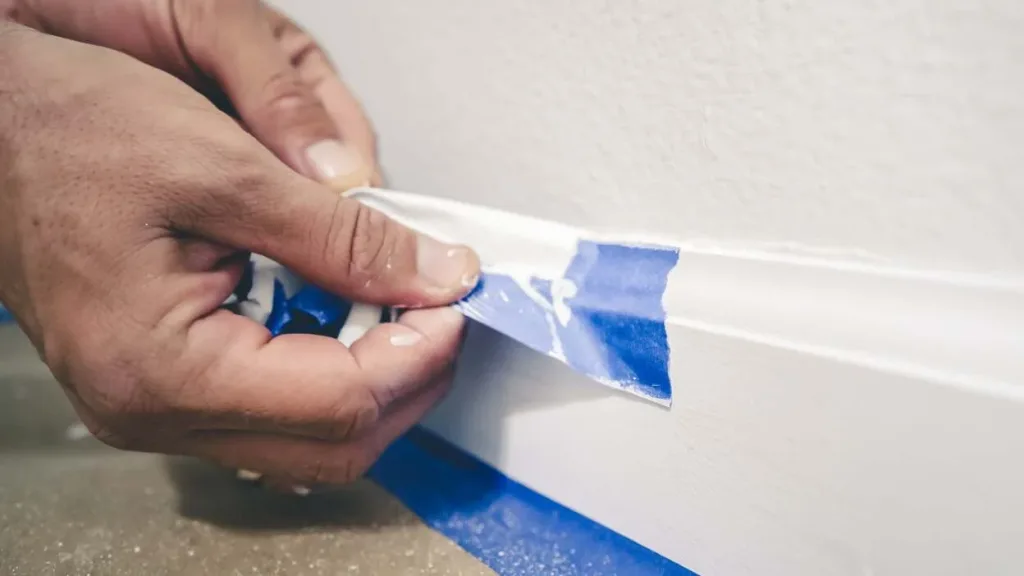Have you ever been in the middle of a vital project and realized that the smallest details – like the type of tape you use – could determine your success? In the world of painting and finishing, performance masking tape is a game-changer, ensuring that your projects achieve the flawless finish you strive for. This article delves into the distinct features of performance masking tape, explores the importance of tape backings, and evaluates its role in the industrial coating process.
What Is the Difference in Various Tape Backing?
Tape backings generally fall into two categories: standard crepe paper backing and fine structured crepe (FSC) paper backing. Knowing which backing to choose can significantly affect your project’s outcome.
Crepe Paper Backing
Standard crepe paper backing tends to be thicker and more robust, commonly found in general-purpose and some painter’s tapes. While this type of backing works well for straightforward applications like affixing sheets of plastic or bundling cables, it isn’t the best choice for projects involving intricate surfaces or curves. Because standard crepe paper is less conformable, it can leave gaps or air pockets along uneven or curved surfaces, allowing paint to seep underneath and jeopardizing the integrity of your finish.
Structured Crepe Paper Backing
Alternatively, performance masking tapes featuring fine structured crepe backing are designed to excel in these challenging applications. These tapes boast remarkable flexibility and conformability, allowing them to stretch and mold to complex shapes—think wheel wells, the sloped hull of a boat, or the contoured surfaces of industrial machinery. Their superior stretchability prevents the creation of wrinkles or bubbles during application, ensuring that every inch of the tape maintains a solid seal against the substrate.
Choosing the correct backing material can save you from the potentially costly consequences of paint bleed and the resulting need for refinish work. It pays to engage with product specifications and descriptions readily provided by manufacturers, allowing you to make informed decisions that lead to quality results.
Related article: Introducing performance masking tape.
Masking Tape for Industrial Coating
Industrial coatings serve as a barrier against corrosion, abrasion, and environmental factors. Original equipment manufacturers (OEMs) rely on them to preserve the longevity and functionality of their products. However, achieving seamless coatings requires specialized tapes that endure the rigors of intense industrial environments.
Performance masking tapes are the backbone of great results in these settings. Their smooth and conformable nature enables them to adhere to challenging surfaces like metal, fiberglass, and rubber. With the ability to endure extreme temperatures and resist moisture, solvents, and harsh chemicals, performance masking tapes ensure professional results when precision matters most.
For example, in the automotive refinishing world, achieving a flawless paint job involves multiple layers of materials, each requiring protection during the coating process. Without the right performance masking tape, paint could seep onto unprotected areas, ruining a vehicle’s finish. However, when using a high-quality performance masking tape, you can achieve clean lines without fear of compromise, ensuring that each layer is perfectly executed.
In contrast, general-purpose masking tape, while versatile for light-duty applications, should be avoided in industrial coating scenarios. Utilizing inferior products can lead to failures that disrupt workflows and create setbacks, thus underscoring the importance of investing in performance-quality tapes.
Why Choosing the Right Performance Tape Is Crucial
When selecting performance masking tape, consider how the right choice can influence your overall workflow efficiency. When the right tape doesn’t hold up under production pressures, the consequence can be severe. Teams may spend valuable time redoing steps, ultimately slowing down delivery times and reducing overall profitability.
Moreover, using subpar tape not only threatens the integrity of your surface finishes but also poses a risk of damaging the very materials they aim to protect. For instance, if a masking tape fails during the application of a solvent-based coating, the tape could allow paint to bleed onto adjacent surfaces, necessitating costly repairs or even replacement of damaged components.
Even beyond the monetary considerations, your business’s reputation can be jeopardized by poor-quality tape. Consistent failures can lead to negative customer experiences, and it’s all too easy for word to spread when a service provider disappoints. In industries reliant on trust and quality, maintaining a solid reputation is paramount to sustaining business growth.
Investing in high-quality performance masking tape isn’t just about getting the job done; it’s about securing your business’s future. When you equip your team with the best tools available, you ensure consistent, high-quality results that satisfy customer expectations.
Conclusion
In summary, understanding the nuances of performance masking tape is essential for professionals who seek to achieve flawless results in challenging painting and coating applications. The choice of tape backing directly influences the performance and reliability of the tape in various scenarios. Performance masking tape, which offers superior adherence and durability in rigged conditions, is vital for any industrial project. Fonitaniya Adhesive Tape has been a trusted adhesive solution provider for over 15 years, continually innovating to meet the industry’s demands. As you move forward in your projects, trust in our performance masking tape to empower your endeavors and elevate your finished results.
FAQs
What is performance masking tape used for?
Performance masking tape is crucial for achieving clean lines in painting and coating applications.
Can I use performance masking tape on all surfaces?
While versatile, ensure compatibility with the surface type before use to achieve optimal results.
How long can I leave performance masking tape on?
Refer to the manufacturer’s specifications for recommended removal times to avoid residue.
What is the best way to apply performance masking tape?
Ensure the surface is clean and dry, then apply the tape firmly to create a tight seal.
Is performance masking tape tear-resistant?
High-quality performance masking tapes are designed to resist tearing, ensuring reliable applications.




